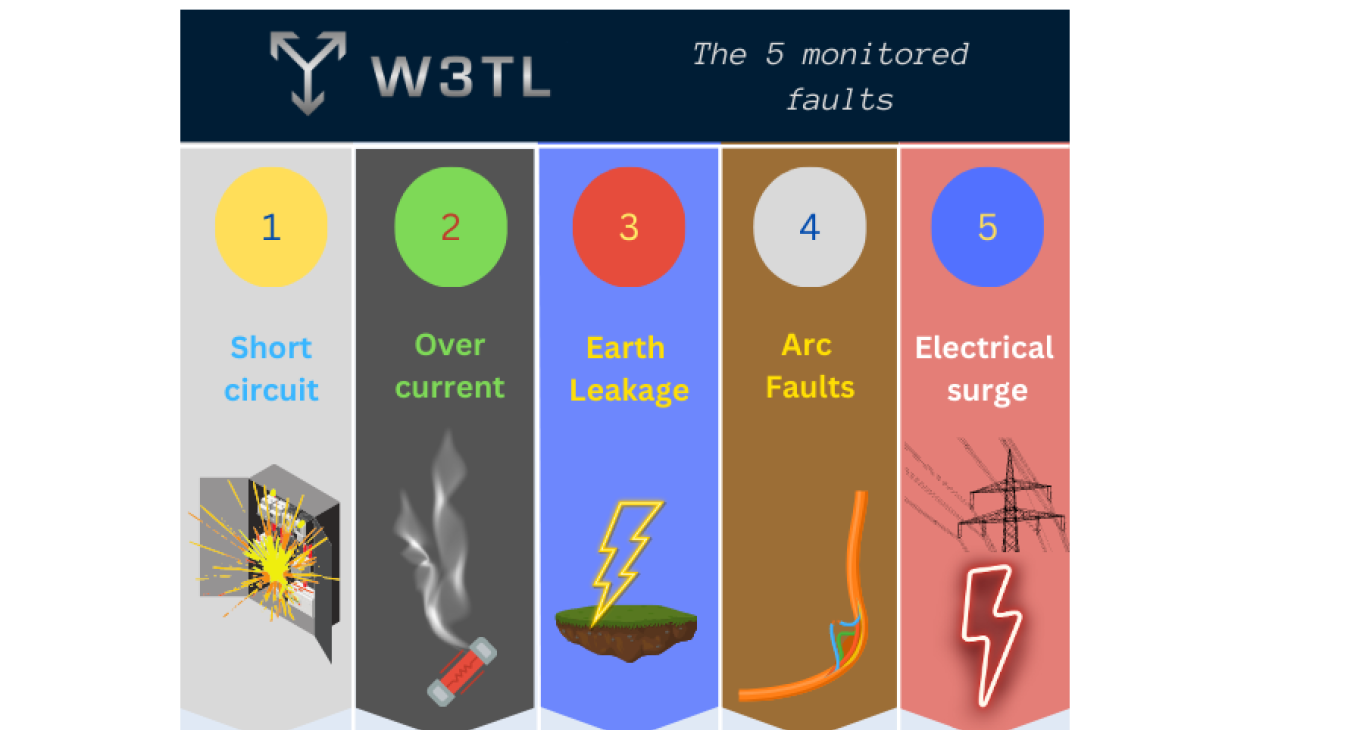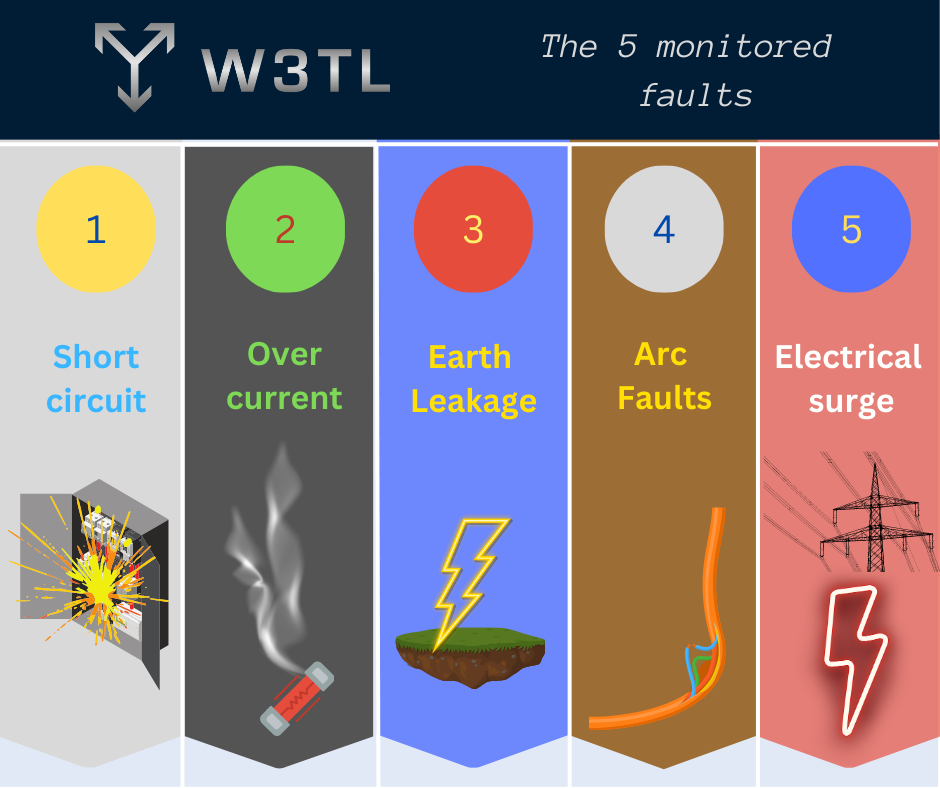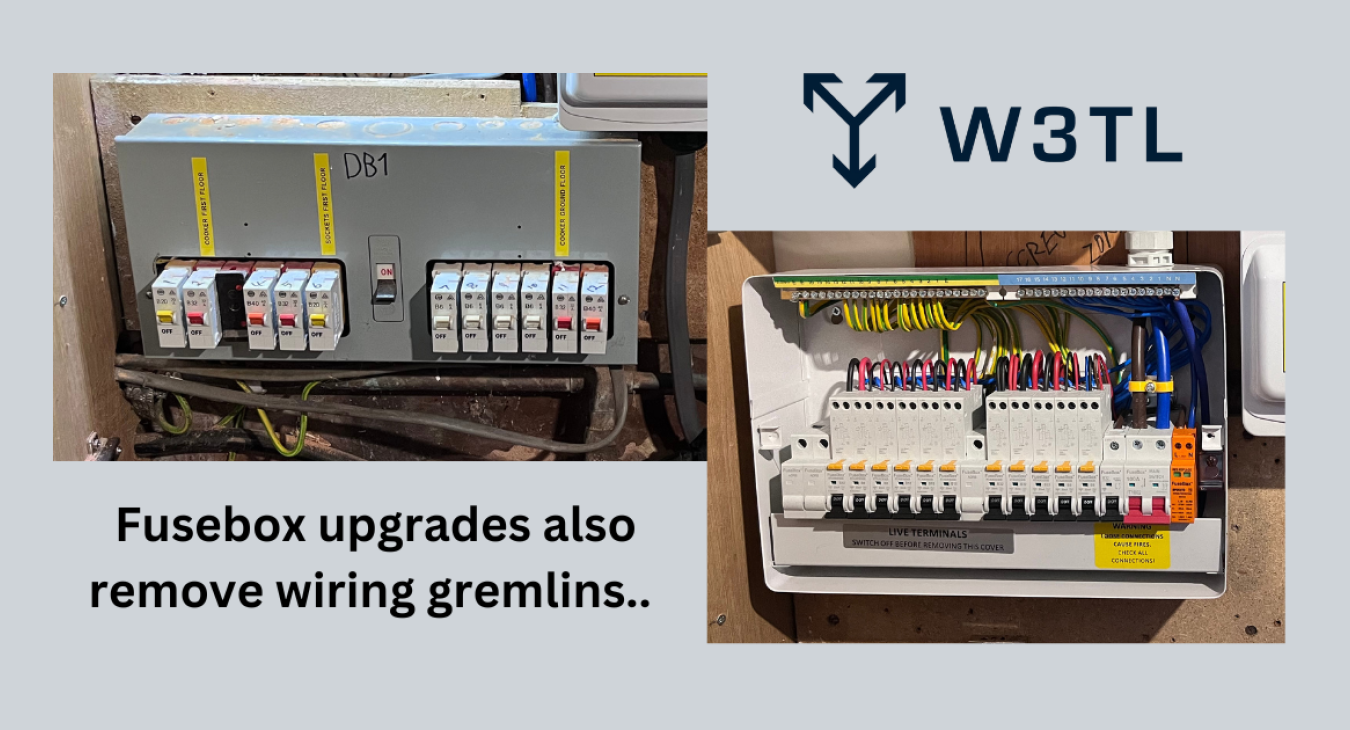
Not All Faults are Being Watched
Have an electrical fault?
Not sure what it is?
It will only be one of five things...
Well... Mostly.
Unless you are looking at the notes from a recent electrical report then your fault will likely be that your electrical supply has gone off causing you to take to the internet to find out what's causing it.
If that's true, then it will likely be one of the following five:

1. Short circuit
A short circuit is any instance where the live cable touches any of the other conductors in the circuit. The live touching the other two conductors: the Neutral and/or the Earth will cause a jump in circuit current and a subsequent bang.
Another short is that of the neutral and earth touching together. As they should be at the same potential (voltage) they wont bang. RCD's will often trip out under this type of short.
The neutral won't carry voltage, but it must be kept electrically separate from the earthing conductor. The earth cable exists for protection and as such is known as a protective conductor (circuit protective conductor, or CPC).
This fault is the most spectacular to witness: instant, loud, and hard to miss. What often follows is smoke, a burning smell, soot around the area that went bang and hopefully the power will have gone off.
The power wont always go off. Depending on the device being used, even after a short the power can remain on and must be treated as LIVE. It may still be dangerous as you could now have an open circuit fault where some of the circuit is live, and the other side is off.
These faults occur when:
- - you cut through a cable that is live
- - you put a nail through it
- - you get water on the terminals which then touches the live with any other conductor
These faults cause massive problems for homeowners. Short circuits could happen anywhere, for example:
- In the loft
- Inside an appliance
- Behind an accessory
- In the flower bed
- Under your newly tiled kitchen floor.
Short circuits are a mini explosion at the point where the short happens. If the power is off because of a short circuit DO NOT TURN IT BACK ON. You risk:
- - further damage
- - igniting/starting a fire
- - exposing the user to shock risk
If in doubt, call them out!
(a professional)
2. Over current
Overcurrent is any situation where there is more current in a circuit than the circuit was designed to safely carry. Circuits that are pulling too much current don't always trip straightaway. The safety device may not operate for a few seconds or even minuets.
This means the cables can begin to warm up and damage the insulation that is stopping the voltage in the wiring from arching or shorting.
Overcurrent devices operate on temperature; as the temperature in the device increases due to the extra current, it reacts. Eventually the devices operates or the fuse breaks.
This happens in the device/fuse before the cabling can begin to warm up and cause problems.
Overcurrent is annoying. As the power goes off, the device cools and can be reset. How much current is flowing through a circuit is what determines these faults.
You can turn some things on and off and check on a energy usage display monitor to gauge what each circuit is using. This isnt very accurate and can make the problem more confusing.
Energy monitoring done professionally will often discover what is causing the devices to operate or fuses to blow.
3. Earth Leakage
Earth leakage is when an electrical current from a circuit finds a path to earth. An RCD device will detect this leakage and switch off. The RCD can be connected to one circuit or it can be connected to many. Because of this you can sometimes have many circuits lose power at once.
So what is it?
An RCD measures the current in the live and neutral. Current remains the same in a circuit; what is in the live should be in the neutral. Because of a particular part in the RCD, it can register when there is more current in one than the other.
A difference between the live and neutral conductors is known as an imbalance. The current remains constant, so if its out of balance, the missing current must have gone somewhere: Earth.
RCD's are generally set to 30mA. That's 0.03 Amps. The heart will begin to react to electrical stimulus around 5mA and by 30mA the heart is reaching a point where the current could be fatal. Therefore, 30mA is the maximum amount of imbalance an RCD can handle before the device operates.
To help explain with a common problem:
There is 1 amp in a lighting circuit. The live and the neutral both then have 1A.
Due to a fault, an electric current is now passing from the live conductors to earth via the lights metal casing.
The circuit has NO RCD protection, so the circuit remains energised.
Along comes Bob. Bob notices the bulb has blown and decides to change it for a new one. Bob reaches out and touches the light fixture. Poor Bob is standing on the ground and makes another path to earth.
The current that is leaking down to earth now chooses to travel through Bob because he represents a quicker route to earth. Poor Bob receives an electric shock. The new bulb falls from Bobs hand. Bob is upset.
With an RCD fitted, Bob can rest assured that if there is any current leaking to earth, that the power will switch off and spare his discomfort and frustration of having to find another bulb.
RCD faults often occur because:
- There is water on the connections
- Water has got into an electrical join
- The insulation has broken on the live conductors
- A piece of equipment has failed
4. Arc Faults
Arc faults are any instance where a circuit conductor is arching.
An Arc occurs when a continuous circuit is broken in a particular way. Breaking the wire and pulling the conductor away won't cause as arc: this would be like operating a light switch. Light switches wont cause an Arc fault device to operate.
Voltage will cause electricity to jump between two points. Lightening can jump from the clouds because the electrical pressure is into the millions of volts. The homes electrical voltage is far lower, so the gap where the voltage can jump will need to be tiny, but not so small that the cables are touching.
Arcs can occur when cables are:
- Crushed
- Bent
- Stretched
- Kinked
- Nibbled by rodents
Cable arching can cause:
- Fires
- Shock risks
- Power failure
AFDD's (arc fault detection devices) are the device we use to detect these faults. They work by monitoring fluctuations in the circuits supply which is then interpreted by a little computer which switches the power off when one is detected.
Finding where the cable is arching can be easy if the length of the wiring is visible. However, most wiring is ran in the fabric of the building, so visual inspection often isn't practical.
5. Electrical Surge
An electrical surge is any situation where there the voltage increases beyond what the supply should be. For the UK its 230V.
Excess voltage can damage equipment. With a surge protective device, the excess voltage is directed to earth and thus away from electrical equipment.
This device wont turn your power off, but its worth checking your device if you have one fitted to see if it has operated. Once they interrupt a fault, you may need to swap out the module for a new one.
Fault finding is a logic puzzle which can be time consuming. Knowledge of the process and a good working methodology is needed to correctly identify and find a fault. A good diagnostician should be able to correctly advise suitable repairs to clear the fault.
Correct identification of the fault is crucial. Failing this means you will be administered a series of repairs that will likely make no difference to the fault. Youll still be expected to pay for these pointless repairs. If you are to pay for a repair make sure the fault is correctly identified and backed up with evidence.
Having trouble with your electrical system?
Are you based in the Norwich area and need an answer as to what is going wrong?
Get in touch, as I might be able to shine some light on the subject
















